Text
Discord server shenanigans ft. @willowiswillow
Also this is how I reveal a key detail with one of my characters lol
1 note
·
View note
Text

Something something 3 year milestone I don't care
0 notes
Text

Thanks RocketSnail, insanely cool.
Just casually destroying any trust/respect I had in you for creating one of the most beloved children's MMOs of all time.
And this is why you don't meet your heroes.
7 notes
·
View notes
Text

It's @glowoomii's bday today and I made some art of their OC Sifie to celebrate!
Once again, happy birthday Woomii! This was a lot of fun for me to do!
19 notes
·
View notes
Text
Was gonna do a Train Talk Tuesday post about this but decided to scrap it cause I didn't think it was that good, but regardless I do want to summarize my thoughts on the ordeal.
Insanely disappointing that the T is being blatantly scammed like this, especially since the cars that have been delivered have been having a myriad of mechanical issues that have forced the T to pull back out the old cars to supplement the new ones.
The T seriously should have gone with either Bombardier or Kawasaki cause at least those two had experience assembling train cars on U.S. soil, but the CRRC didn't, with the only reason why they won the bid being they didn't bid as much as their competition.
And now 10 years later, Boston's still trying to catch up.
0 notes
Text

I know next to nothing about object shows but I know my close friend @willowiswillow is a fan and while discussing some stuff about HFJONE in DMs I had this idea lol
If you can't tell what the arms are doing, they're supposed to be making the hands rubbing together gesture
If this doesn't get me put on a hitlist by people who hate Liam I will consider my mission to be failed and I will never shitpost ever again (not really)
6 notes
·
View notes
Text

*purring noises*
Yes, I still do draw, and I wanted to do something more cutesy, so I did Melody in the Lucky Bell costume from Super Mario 3D World!
And no, before you say it, I'm not a furry (at least not yet).
3 notes
·
View notes
Text
It's St. Patrick's Day
If you live in Chicago you know this means it's time for Shrek to be killed so his body can be used to dye the Chicago river green
4 notes
·
View notes
Text

Boof
It's Public Sleeping Day! Here's a PSA from our favorite sleepyhead (don't tell her we said that)

(Here's a blank template - don't disappoint us...)

130 notes
·
View notes
Text

Did this little thing cause it's still Aromantic Spectrum Awareness Week, so I figured might as well do something to celebrate, so here's Sandwich waving at the crowd complete with the aromantic flag in the bg overlayed over some NJT Arrow III EMUs! (Mainly cause I am a train-loving dork)
I did this with Sandwich as he is my sona, and by extension he is aromantic, as I am as well! Been this way for nearly a year, and I'm super proud of being aromantic, and I wouldn't want it any other way.
Happy Aromantic Spectrum Awareness Week everyone!
1 note
·
View note
Text
Train Talk Tuesday
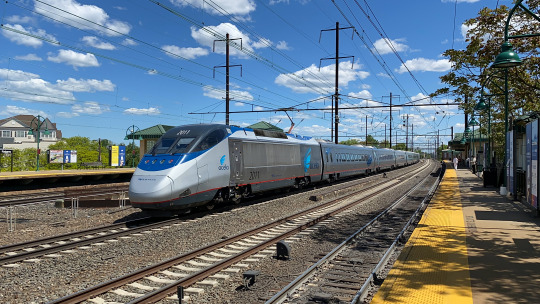
(Before I get into the actual post, I want to apologize about the lack of posts, I was kinda out of stuff to talk about for both Trains and Transit, and due to me being in college, I had a time crunch as well, so I just stopped doing new posts without any warning. I do want this to change somewhat soon, but I can’t make any promises. That being said, I hope you enjoy this post after a very long hiatus!)
Train Talk Tuesday: There’s been a lot of talk recently regarding the Corridor ID Study being performed by the Federal Railroad Administration to distribute federal funding to rail projects across the nation (which you can learn more about here), and for good reason! Rail projects have never looked brighter than they ever have in the United States. Hey, maybe I’ll do a post on that next. Anyway, notably in that study, some high-speed rail corridors were included, and that got me thinking about the United States' stake in high-speed rail, and how we got to this point. So how did we get here? Well, get comfy, dear reader, and on this Train Talk Tuesday, I’m going to discuss the history of high-speed rail in the United States, all the way from its humble beginnings, to where we are now, and what the future entails.
Pinpointing when the United States got into high-speed rail is a bit difficult, as this is something that is very hotly contested among train nerds. Some would say that it started in 1965, others say it didn’t begin until the 90’s. For the sake of completion, I’m going to begin in 1965, as that’s when the United States first tried to make a “high-speed train”, with mixed results.

To set the stage, we actually have to flash back a year prior, to October 1st, 1964. This was a monumental time for rail transport, as this was the day that the Japanese Shinkansen went into service, and it sent shockwaves across the world. In an era where the car and the airplane was seen as the future of mass transportation, the Japanese had proven that the train could still put up a fight in the (then) modern day. Other countries would take interest in investing into high-speed trains, one of which was, shockingly, the United States, which passed the High Speed Ground Transportation Act on September 30th, 1965. This new act would try to encourage high-speed rail development in the United States, to bring it up to snuff with Japan and the Shinkansen, maybe even surpass it.
“Oh, so that’s when the Acela was introduced?”
Not quite there, my friend! We’ll come back to that soon.
While the act was pending, the Pennsylvania Railroad began working with the Federal Government in trying to create a new high-speed train between Washington D.C. and New York City, on what is now the Northeast Corridor. There was a good amount of squabbling between PRR and the government regarding this new train, most notably the top speed. PRR wanted this train to hit a top speed of 125 mph (201 kph), while the government wanted it to hit 150 mph (240 kph) or even 160 mph (260 kph), as a way to beat the Shinkansen in Japan, which topped out at 137 mph (220 kph). The government got their way in the end, but this would have certain consequences down the road. Anyway, with the details decided and the act in effect, in 1966, Budd Company was contracted to build the new United States' first-ever high-speed train, with the first sets arriving in 1967. So what did we get?

The Budd Metroliner.
Keen-eyed readers will immediately notice the profile of this thing, and will go “How in the world is that thing ever gonna hit 150 mph (240 kph) with that kind of shape?”, and to that I say “Believe me, it was never gonna hit that kind of speed.”
Now, there were a few reasons why this thing was never gonna hit 150 mph (240 kph), but the one I want to start with is the profile. Pretty much any high-speed train today has a shape that resembles a bullet (hence their nickname of “bullet train”) in some way. Now, why is that? The short answer is that making the front like that makes the train cut through air cleaner, which allows for the train to go faster using the same amount of energy. It’s a better profile in general if you want a train to go fast. The problem here is the Budd Metroliners are basically like trying to take a metal cinder block and attempting to make it go fast using a rocket. It’s going to take a lot more energy to get something with that profile to hit high speeds, and while possible, it’s not gonna be easy. Regardless, the Metroliners were still trialed with the expectation that they would hit 150 mph (240 kph) top speed, with one even making it all the way to 164 mph (264 kph) near Princeton Junction in New Jersey, but testing revealed that the Metroliners were an absolute mess mechanically, most notably their tendency to overheat during frequent stops and starts, and even if the Metroliner was flawless mechanically, testing would show they would very much not be able to hit the Princeton Junction kind of speed in actual service, as shown with a relatively funny incident in retrospect. While testing the Metroliners in December of 1967, a set of Metroliners passed by some older MP54 railcars (pictured below) and due to a pressure drop between the two trains, it ended up sucking out the windows of the MP54, which showed that the Metroliners really wouldn’t work well in conjunction with old equipment, something the Shinkansen got around by not letting it run alongside other trains.
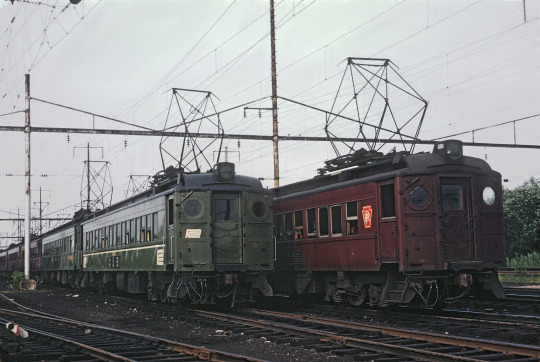
The mechanical faults and window suck incident would delay the Metroliner's introduction until 1969, when the Metroliners were finally put into service. By this time, PRR had merged with the New York Central and the New Haven to form Penn Central, and they would run the Metroliners. Finally, the United States had a high-speed train of its own. Except, by all accounts, it kinda sucked as a true high-speed train, which brings me to the next reason why this thing was never gonna beat the Shinkansen: Everything that it worked with was old.

To go back to the Shinkansen, the main reason why it worked so well was because it was a completely new rail line. Everything was designed from the ground-up with the Shinkansen in mind, be it the rails, the overhead wires, the lack of railroad crossings, you name it. Everything about it was new, not just the trains. The Metroliners didn’t get this treatment. Despite it being a brand-new train, nothing that it relied on got upgrades to let it reach the lofty goals that were set for it, the most crucial being the tracks, signals, and the overhead wires. The signals and tracks in particular were a particular concern, having been made for much slower trains than the Metroliner, something which caused the FRA to hard limit the Metroliners to no more than 120 mph (190 kph), later 100 mph (160 kph). Overhead electrification also proved to be an issue, with an 8-car train causing circuit breakers to trip during testing, which limited the sets to 6-car maximum. The sharing of track with legacy equipment was still a sore point for the Metroliner, with yet another incident regarding windows of an older MP54 being sucked out by a passing Metroliner happening during revenue service. Still though, they were the fastest trains North America had seen at the time, and they proved popular. After Penn Central proceeded to violently explode and crumble into ash, Amtrak took over the Metroliner service in 1971. The Metroliners, despite their numerous mechanical faults, chugged on with Amtrak on the Northeast Corridor, as it was the newest piece of equipment they had at the time. The Metroliners continued to be the poster child of the Northeast Corridor until the arrival of the AEM-7, as by that point, the Metroliners were plagued with so many mechanical faults, from rough riding to the overheating from frequent stopping and starting, that continuing to run them was just no longer feasible, and overhauls and rebuilds wouldn’t do much to fix their issues. Amtrak had considered getting new Metroliner II’s to replace the aging fleet, but this plan ultimately never went anywhere. In February of 1988, the Metroliners were withdrawn from the Keystone Corridor in Pennsylvania, finally marking the end of the Metroliner, and the United States' first attempt at a high-speed train.
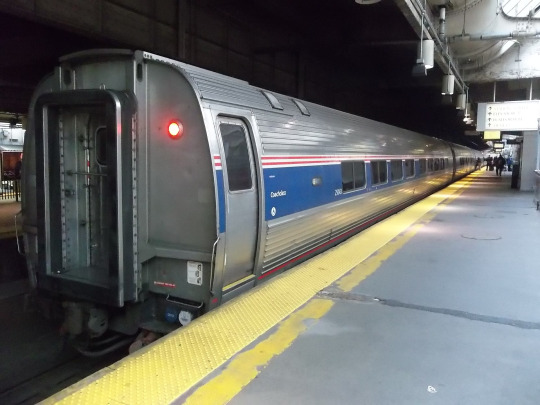
So what was the legacy of the Metroliner? Well, you can still see it today if you ride Amtrak right now, as the Amfleet coaches (pictured above) are based off of the Metroliner designs! Amtrak liked the interior design and construction of the Metroliners, so they had Budd build passenger cars based off the Metroliner design, just without any propulsion equipment. Beyond that, Metroliners are still being used by Amtrak today, but not in the way you expect. 29 of the old Metroliners were converted into cab cars (A cab car is a car that is able to control the movement of a train, like the cab of a locomotive would) for push-pull service, which you can spot if you see an Amtrak car with a yellow and black back (seen below).

As a high-speed train, the Metroliner’s legacy is a bit hard to determine. It really didn’t meet the expectation of being a competitor to the Shinkansen, but it did give North America the fastest train at the time. Ultimately, I think the Metroliner was a bit of a failure in that it never did end up being true high-speed rail, but it did end up succeeding in paving the way for better attempts at high-speed rail in the future, one of which we still have to this day. Speaking of which...

After the Metroliner, came the Acela. This is currently the fastest train in the United States, and the only one that can actually hit speeds that are considered “high-speed rail”, being 150 mph (240 kph), though only on one short section of track. But how did we get the Acela?
So not long after the retirement of the Metroliners, Amtrak would invite two foreign train sets to run on track in the United States to show off rail technology in Europe, as well as to see what kind of high-speed trains were operating there. The two sets that were sent were the Swedish-built X2000, and the German-built ICE (both pictured below).

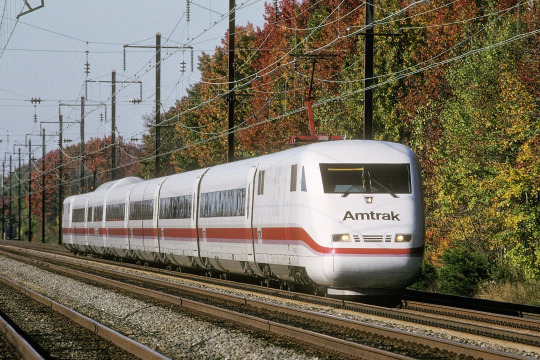
Unfortunately, the Clinton Administration wouldn’t give Amtrak the necessary funds to procure either of these trainsets, so Amtrak didn’t end up with either of these. But even so, Amtrak didn’t want either of them, as they weren’t 100% perfect. The X2000 impressed Amtrak for its active-tilting technology, but Amtrak didn’t like the price tag. The ICE impressed Amtrak for its dual powercars, but the hang-up this time was the lack of active-tilt. So Amtrak’s three main things on its shopping list was a train which had dual powercars, active tilt, and on the cheap, something that didn’t exist at the time. So what is a railroad to do when something it wants doesn’t exist? Make it exist, obviously! In this case, Amtrak ended up contracting two separate companies to make the Acela trainset, being the French company Alstom, and the Canadian-German company Bombardier.
(Side note, it is funny how these companies were separate at the time while now Alstom owns Bombardier, so technically the Acela is made by one company now.)

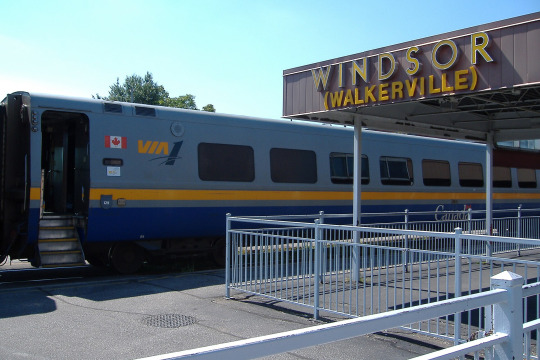
Anyway, Alstom ended up supplying the power cars, being based on the TGV Duplex power cars (first pic above), used in France. Bombardier took the mantle of supplying passenger cars, using the LRC passenger cars used in Canada for VIA Rail (second pic above). Since these cars had active tilt, they ticked the checkmarks for Amtrak. With time, and after encountering many teething issues trying to get them into service, the hodge-podge of a train set from two companies finally hit the Northeast Corridor in 2000. Despite some outages and scattered incidents, the Acela served the Northeast well, and continues to serve the Northeast well as Amtrak’s high-speed rail service…on paper.
See, the Acela is not without fault, most notably in how it’s barely any faster than a regular Northeast Regional between Washington D.C. and Boston, Massachusetts. Now, why is that?

The problem here is effectively the same as the problems that plagued the Metroliner, excluding the horrible profile. Once again, old equipment and infrastructure would hold back the Acela from reaching its true potential. The top speed allowed for the Acela is 150 mph (240 kph), but you only reach that on select portions of the route. Your average speed is around 70 mph (113 kph) across the entire Northeast Corridor, which is far from high-speed rail in any metric. A lot of this is due to old bridges and tunnels built over 100 years ago that wouldn’t be able to withstand the whiplash of the Acela going faster over them, along with sharp curves built into the track, which limit speeds further. This was fine for slower trains of old, but for a high-speed rail service, this won’t cut the mustard at all. Amtrak tries to get around this by having the Acela use active tilting, but that only works as a stop-gap. The biggest sour point for the Acela is without a doubt the tracks going into and in Connecticut. Here, the track between New Rochelle, New York, and New Haven, Connecticut are not actually owned by Amtrak, as Metro-North owns the section from New Rochelle to the NY/CT state border, while Connecticut Department of Transportation has ownership of the track coming from the border going into New Haven, which puts Amtrak at the mercy of the two entities regarding the speed of the Acela on this section. Because both of these agencies run slower commuter trains on this section of the Northeast Corridor, there’s little incentive on their part to upgrade it for high-speed rail. This results in the Acela hitting a glacial 60 mph (97 kph) at the worst between the NY/CT border and New Haven. However, even if this section of the corridor were to get proper upgrades to allow it to go faster, there’s another problem that holds the Acela back from reaching its true potential, and that’s the grade crossings.

Going back to the Shinkansen, one thing that made it so revolutionary was the decision to eliminate grade crossings entirely, and have the train run above the road instead. This was a very smart decision to make as trains are very hard to stop when they are moving fast, and should something get stuck on the crossing or someone attempt to run the crossing, this can result in a fatal accident, something Brightline in Florida is all too familiar with (see this post). The Northeast Corridor only has a total of twelve grade crossings, all located within Connecticut. Due to these crossings in place, the FRA has limited trains to run at a maximum of 80 mph (130 kph), which is okay for a Northeast Regional, but an absolute hang-up for a premium high-speed service for the Acela. Amtrak has done grade separation in the past, when it separated the corridor between D.C. and New York City, but unfortunately grade crossings still exist here due to local group pushback. If the Acela is to reach its proper potential here, the grade crossings have got to go. There’s no other way.
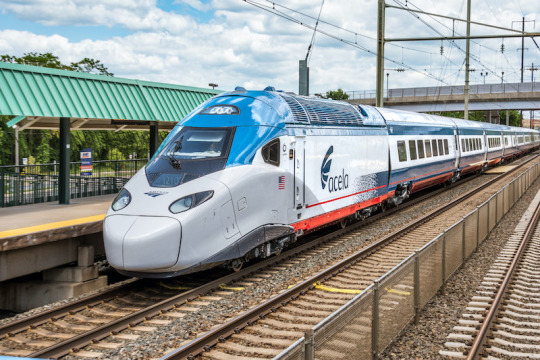
Despite all these issues, the Acela generally served the Northeast quite well to this day, but the fleet was due for an upgrade soon. In 2016, the Obama Administration gave Amtrak a $2.45 billion dollar loan to order the next generation Acela train sets. Unfortunately, these sets have yet to make it onto the Northeast Corridor, due to Alstom, the company producing the new Acelas (seen above), having problems testing them on the Northeast Corridor, along with the trains themselves having a myriad of mechanical faults, something Amtrak documented in their OIG report here. So unfortunately, it seems like the future of the Acela is going to have to wait a bit.

But, that doesn’t mean that high-speed rail isn’t happening in other places in the country. There’s plenty of projects either being considered or already underway in the United States. Arguably the most famous (or infamous) is California High-Speed Rail, a rail link between San Francisco and Anaheim, and later Sacramento and San Diego. This project has a lot of stuff going on, and could deserve its own post, but in general I am pretty positive about the project, as it can be a catalyst for other projects in the nation. Other high-speed rail projects would include Brightline West between Rancho Cucamonga, California and Las Vegas, Nevada, Atlanta HSR between Atlanta, Georgia, and Charlotte, North Carolina, Texas Central between Dallas and Houston, with connection to Ft. Worth, and Cascadia HSR between Eugene, Washington State, and Vancouver, Canada. All of these high-speed rail projects were included in the Corridor ID Study I mentioned at the beginning of this post (which really should get its own post), so I’m hoping that these projects eventually obtain federal funding to begin building more high-speed rail corridors.
So, conclusion?
High-speed rail in the United States has an interesting history, to say the least. We never really nailed it down completely in any iteration, be it the Metroliner or the Acela, yet that didn’t keep us from not trying. And now, high-speed rail in the United States has never been more relevant than ever. Mistakes from the past regarding our treatment of railroads continue to plague us to this day, which ultimately hold us back from true high-speed rail today. Yet the torch is burning brighter than ever, and with the Corridor ID Study opening the door to new projects, true high-speed rail may just be a few short years away. Until then, continue to advocate for high-speed rail projects, and soon enough, good things will come to those who wait.
0 notes
Text

Hi so I found out today that today is arospec awareness week, and as someone who is a proud aromantic, I had the idea of making this as a way to have a laugh lol
Now my new Tumblr banner!
(Update: I forgot I was supposed to do it with the NJT Arrow III's, so here's another edit)

0 notes
Text


It's Aro-Spec Awareness Week again my friends, and that means it's time for more silly little critters! (You can find last year's here.) ✨Keep up the amazing work, fellow aros✨
13K notes
·
View notes
Text

Did a drawing of Melody in a dress and beret, cause I was bored and I wanted to try some new stuff out, and I figured I'd do it on Melody cause why not?
6 notes
·
View notes
Text
Hi, so it's Valentine's Day where I live, meaning I am now legally required to post this video because this day has zero meaning to me as I'm aromantic
Also cause I think it's super funny lol
0 notes
Text

So I do play some ToonTown: Corporate Clash in my free time, and I thought Cathal looked pretty cool, so I drew him.
First time ever doing something from ToonTown, and I think it worked out well!
19 notes
·
View notes
Text

WHO ARE YOU PEOPLE?!?!?!?!?!
Also why the hell did I get no notifs of these on my phone
2 notes
·
View notes